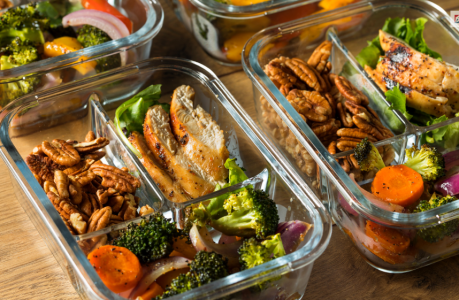How To Smooth Textured Walls? – A Budget-Friendly Guide

You can learn how to smooth textured walls with a simple DIY skim-coating tutorial. You can smooth your walls with a skim coat which may have unnecessary texture. Basically, in this process, you skim a thin layer of joint compound or plaster on your wall. This process is simple, and with a bit of care, you can smooth your walls.
In this article, you will learn the steps you need to follow to smooth a textured wall. This article will guide you through the skim coating process. You will also learn the materials you need and how to use those materials accurately to smooth your walls.
Textured Walls: A General Overview

You get a textured wall When you treat a wall with a substance that creates textures. Hence, if there are imperfections on the wall, you can hide them with the help of textures. Additionally, you can also add interest to your room. Basically, a wall with textures helps to hide imperfections or cracks in the wall.
These walls can blend the seams of drywall sheets. Apart from that, they can also hide other imperfections on your walls. Generally, there are different techniques that you can use to create wall textures.
No texture is perfect, and this is what inspires owners to recreate those textures as they wish. However, this is not possible for all. To create a texture, one needs to use precise techniques and preparation to pull off this look.
For instance, one needs to apply textures on walls quickly before they dry up. Otherwise, it will remain incomplete and will look terrible.
For example, in skip trowel texture, after applying the joint compound, the painter has to angle the knife to create a slight raise. Hence, only a skillful person can complete this method. A single incorrectness can cause problems in the design of the texture.
What Is Skim Coating?

If there are imperfections on your textured walls, or if you do not like your texture anymore, skim coating will help you remove the texture. Also, it helps you get a smooth wall as it smoothens your texture.
Basically, during skim coating, you skim a thin layer of joint compound on your walls. Additionally, in some cases, you also add plaster to your walls. Generally, the materials are pretty inexpensive and readily available in a painting or hardware store.
You can do skim coating on your own if you can put in the effort. However, you can always hire a professional if you do not want to put in the effort. If you have the patience and the time to do it yourself, all you need is a trowel and a thick nap paint roller.
However, if you do it wrong, the drywall can get messy. Hence, it would help if you tooktime to prepare your space beforehand. This will help you mix your joint compound better.
Apart from that, you also need to cover your floors, furniture, appliances, and other things in your room. Hence, it will help you to contain the dust in that room and not damage other items. Otherwise, once you start skim coating without protection, there will be dust on almost every corner of your house.
How to Smooth Textured Walls? – Materials You Need

The following are the materials you need to perform skim coating to smooth textured walls in your room:
- All-purpose drywall compound (joint compound)
- Mud pan to mix the compound
- Spray bottle with water (This will help you thin the drywall compound)
- Taping knives: one knife of 12-14” and another of 2-6”. However, you can select it depending on your wall space
- A small bucket (5 gallon)
- Essential Tools like drill, roller with 3/4″ nap, mixing paddle, and trowel
- Sandpaper (180-220 grit)
- Items for protection: plastic Sheets, papers, floor coverings, and drop cloths
- Shop vac
- Dust mask/respirator, according to your needs
However, if you are skim-coating only a small area of your wall, you do not need to mix your joint compound. In such cases, choosing a readily available joint compound mix is better. Moreover, to do this, you only need a 5-gallon bucket and a little mud (both of which will cost around $15).
Furthermore, choosing a powder joint (drywall) compound is a better option this is better because, in this case, you can get more coverage with dry mix mud. However, if you have a lot of skimming to do, it is better to go with a dry mix of mud. In this case, too, you will need a 5-gallon bucket (which will cost you around $5).
How to Smooth Textured Walls? – Steps to Follow

Here are the steps you need to follow if you want to smooth textured walls in your home:
1. Preparing the Joint Compound (Drywall Compound)
First, mix the joint compound to reach the right consistency. Basically, the right consistency is of thick pancake butter. To mix this, you can use the mixing attachment for your drill.
Make sure that the consistency is thin enough to get smooth on the wall. However, make sure it is not too thin so that it does not stick to the wall and drip/dribble down. Hence, mix it properly to get the right consistency. Apart from that, ensure no lumps are present after you complete forming the compound’s consistency.
On the other hand, if you are using a mud of ready mixture, you need to make sure it does not get too runny once you start making the consistency. Hence, add a little water while you make the consistency. However, if you end up making it runny, add more dry mix to it.
Applying the Joint Compound to the Wall
As already explained before, you need to be quick when you are about to apply consistency. This is because the mud will dry up and get hard faster as it is full of water. Hence, apply it on the wall and skim it smoothly accordingly. Use a small amount of compound on the wall at a time.
When you are adding the joint compound on the wall, add it in 4’x4’ sections. However, you can change your way depending on your weather conditions. This is because the temperature and humidity of your room have a major impact on the compound mixture.
In this case, you can use a nap paint roller to apply the compound properly. This way, you can also apply more mud to the wall at a time. On the other hand, if you use a putty knife, you cannot add more mixture to the wall.
To pick the mixture through the roller, you can use a roller tray or take the compound mixture directly from the bucket. Here, you will see that although you can take more mud out of the bucket, it will be a messier method.
Skimming the Walls
Once you roll the mud into the first section of your wall, smooth the mixture with the help of the trowel. You will see that the first coat on the wall will not be smooth enough. Hence, you need to add another coat with the help of the roller and use the trowel again to smooth the surface.
Moreover, make sure you smooth the mixture in the same direction with each coat you add to the wall. Furthermore, in a consecutive coat, you can use alternate directions. For instance, if you use vertical smoothening on one coat, use horizontal application on the next.
Dry the Wall
Once you apply coats to the wall and smooth the surface, let the wall dry for a few hours. You can also use a light at an angle on the wall that you are working on. This will help you see imperfections on the wall. If you see imperfections, you can use the spray bottle to spray the mud on the wall or use a roller as required.
Apply Sanding to the Drywall
Although it is not very necessary, you can use light sanding between consecutive coats. Basically, once you use the trowel, you can smooth your wall. Moreover, you will see lines on the edge of the areas where you used the trowel.
Hence, with the help of quick sanding, you can get rid of these lines and make the surface a little rough. This will help you apply the next coat better.
Prime and Seal
Once the skim coating is complete, use a PVA primer to prime skim your walls. This will help you prepare the wall for painting. Basically, this primer helps seal the pores on the wall.
Wrapping Up
Hence, you can see that you need to use skim coating to smooth textured walls in your home or office. Although it is simple to do it yourself, it still requires a bit of effort. If you do not want to put in the effort, you can always hire an expert to do it fast and perfectly.
Do you have more suggestions on how to apply skim coating on textured walls? Consider sharing your information in the comments section below.
Read Also:

























Leave A Reply